The second day of ICCF-18 was a full one, beginning at 7:45AM and ending at 7PM. Eli and I filmed all the lectures, and spoke with some researchers one-on-one.
It will take a while to get video out; there’s lots of permissions to be granted, and after filming for 13 hours, editing is not the first thing on our minds!
But we got some pictures and audio for you dear reader.
Keynote speeches by David Kidwell and James Truchard started the day.
 David Kidwell spoke on Low Energy Nuclear Reaction Research at the Naval Research Laboratory, and it was a sobering lecture for first thing in the morning. Kidwell attempted to bring enthusiastic researchers back to reality by reminding them that their number one job is to “try to prove themselves wrong.”
David Kidwell spoke on Low Energy Nuclear Reaction Research at the Naval Research Laboratory, and it was a sobering lecture for first thing in the morning. Kidwell attempted to bring enthusiastic researchers back to reality by reminding them that their number one job is to “try to prove themselves wrong.”
He stresses that hard scrutiny of data sets is necessary to trust the results of your measurement, because instrumental artifacts can skew interpretations. He went through several examples of experiments where anomalous measurements were made, seemingly pointing to transmutation effects, but were due to contamination.
Kidwell claimed the Naval Research Laboratory (NRL) has observed no evidence of nuclear products or transmutations from LENR experiments, but they still believe the phenomenon needs further study.
Kidwell’s doubts about data reported by both Yasuhiro Iwamura and the Martin Flesichmann Memorial Project (MFMP) were soundly countered by Iwamura and Bob Greenyer of MFMP in the question period after the lecture. Still, the point was not lost on the audience: look skeptically at your own data to make it iron-clad.
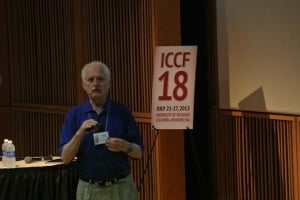 James Truchard‘s talk on The Role of National Instruments in the Global Environment was a tour of National Instruments hardware, software, and applications that support research in the field. “Ours is to measure, not to judge” is the motto of the company and Truchard repeatedly stated that he remains “objective” and “neutral” on scientific issues, preferring to let the data speak to the phenomenon.
James Truchard‘s talk on The Role of National Instruments in the Global Environment was a tour of National Instruments hardware, software, and applications that support research in the field. “Ours is to measure, not to judge” is the motto of the company and Truchard repeatedly stated that he remains “objective” and “neutral” on scientific issues, preferring to let the data speak to the phenomenon.
Around 35,000 companies use NI products, but no one industry has greater than 15% of the billion+ dollar revenue. The company grew from Truchard’s work in the 60s on sonar, and now serves businesses from LEGO toys to CERN particle research. LabView software has been available free to cold fusion researchers since 1989, when Truchard wanted to support the understanding of the claims.
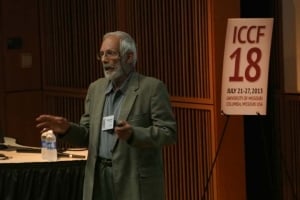 Next up was Edmund Storms, who spoke about the requirements a theory must have to model cold fusion in Explaining Cold Fusion. Originally an experimentalist, Storms has developed a theory “out of disappointment” with other models that couldn’t tell him how to make the reaction work on-demand.
Next up was Edmund Storms, who spoke about the requirements a theory must have to model cold fusion in Explaining Cold Fusion. Originally an experimentalist, Storms has developed a theory “out of disappointment” with other models that couldn’t tell him how to make the reaction work on-demand.
Seeing most theories as containing too many assumptions, he states clearly three of his own. First, since cold fusion doesn’t happen easily in ordinary materials, there must be some change in the environment before a reaction can occur. He calls this the Nuclear Active Environment (NAE).
Second, Storms assumes that all the phenomenon seen in Pd-D systems, Ni-H systems, and biological systems derive from the same basic nuclear mechanism. Any theory of LENR must apply to each and every method that generates both excess heat and transmutations.
Finally, he assumes that cold fusion is not hot fusion, and the nuclear mechanism and reaction products are completely different.
Storms believes that reactions fall within the known laws of nature, and the task is to “find out what’s missing.”
It was a strong challenge to the many theorists in the audience who have been struggling to model this reaction for two-and-a-half decades, many of whom will speak in the next few days. A theory will bring clear direction to engineering applications for consumer products, something we all are waiting for.
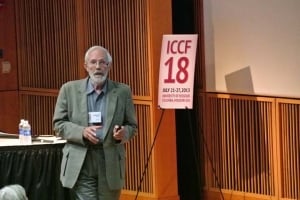 Right after Storms’ talk, he was honored with a Distinguished Scientist Award. His career in nuclear science began in the 1960s and he worked on projects that sought to power rockets to Mars, among other lofty goals, and always, as success approached, funding was cut, and the project forgotten.
Right after Storms’ talk, he was honored with a Distinguished Scientist Award. His career in nuclear science began in the 1960s and he worked on projects that sought to power rockets to Mars, among other lofty goals, and always, as success approached, funding was cut, and the project forgotten.
Storms’ joked that now that he has been working on cold fusion, he hopes the same thing doesn’t occur.
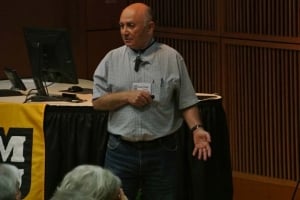 After a morning break, Jean-Paul Biberian described the cell design for his plasma-style reactors, as well as the parameter values that make it work with high reproducibility. Cathode material and dimension, the nature and composition of the electrolyte, pressure and temperature, voltage and current, are all elements that effect the outcome.
After a morning break, Jean-Paul Biberian described the cell design for his plasma-style reactors, as well as the parameter values that make it work with high reproducibility. Cathode material and dimension, the nature and composition of the electrolyte, pressure and temperature, voltage and current, are all elements that effect the outcome.
These types of cells are good for demonstrations because they start up quickly, but unfortunately, with this design, the cathode is destroyed quickly, making the duration limited.
 Then it was lunchtime, where we walked to a cathedral-style building to eat, and Jed Rothwell spoke on Lessons from Cold Fusion Archives and From History.
Then it was lunchtime, where we walked to a cathedral-style building to eat, and Jed Rothwell spoke on Lessons from Cold Fusion Archives and From History.
He made the claims, again, that cold fusion is real, replicable, and undoubtedly more developed than it was many years ago, describing the problem early on as a materials issue.
Full of anecdotes about Martin Fleischmann, there was a lot of laffs amidst the serious message: “do your homework” and “don’t be afraid to ask for help”.
At lunch, I happened to sit next to Jacques Dufour, former scientist at Shell Oil and French Laboratoire Des Sciences Nucléaires (CNAM), now retired. I asked him about nuclear power in France, and if there is any support for research from the federal government there. Here’s a bit of his response.
Just before leaving, I happened to bump into Fabrice David, who described his technology that is generating electricity directly from diodes exposed to an ambient deuterium gas, with no input power. Self-Polarisation of Fusion Diodes: From Excess Energy to Energy by Fabrice David and John Giles describes the circuit. [.pdf]

There were so many more talks, and I got video and audio with heavywieghts Akito Takahashi, Mahadeva Srinivasan, Xing Zhong Li, and Mitchell Swartz.
But it’s too late to say more now…. We start again in less than six hours!
Here’s some photos of the day:


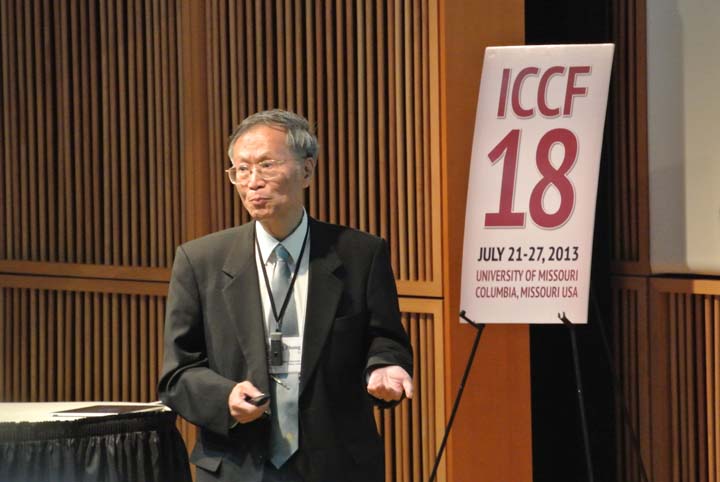

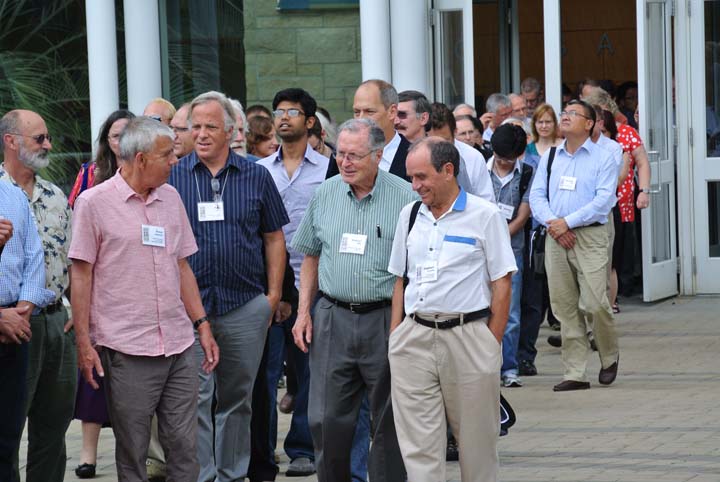

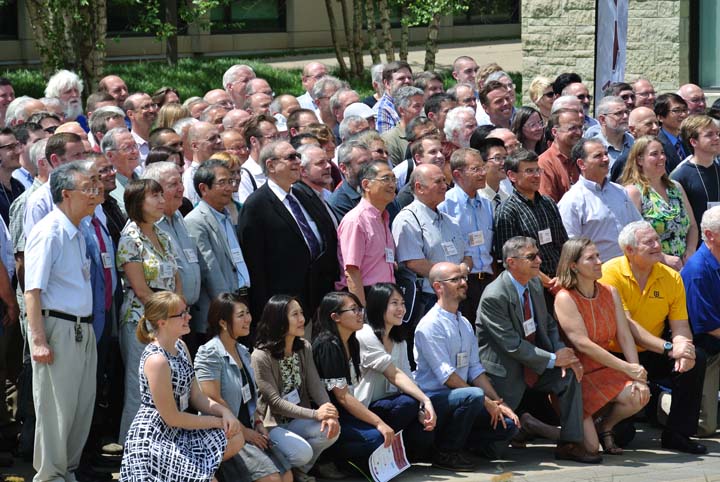
Good job Ruby! Look forward to more tomorrow!! Did the Defkalion on-line demo make an impression on anyone there?
It doesn’t sound like we will be getting much out of France for a while.
Well done Ruby, would I be wrong in that they seem to be just asking our wonderful scientists to look at the Truth.
Would anybody agree that when years have to be wasted just trying to get science to look at Evidence beyond their religious closed-minded denials of anything beyond established Dogma, it would show there is something very wrong with that organisation.
Is the Global Energy Corporation giving a presentation?
Hi Ruby, Thanks so much for this re-cap. I have referred your site to my 89 year old father who wants to see LENR come to fruition.
Again, Thanks!!
Ruby, Thank you very much indeed for your high quality but objective coverage of this field.